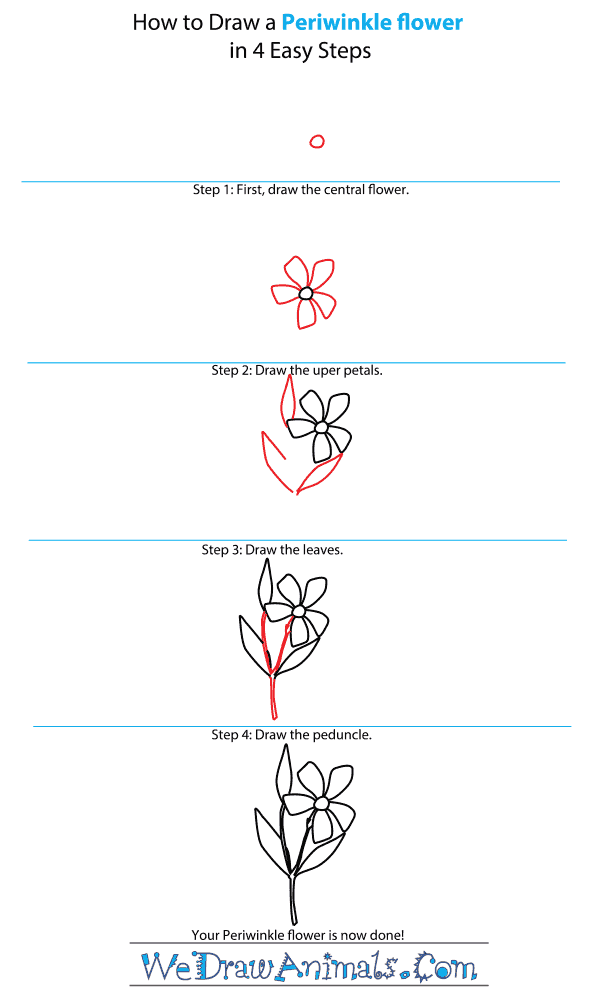In this quick tutorial you'll learn how to draw a Periwinkle Flower in 4 easy steps - great for kids and novice artists.
The images above represents how your finished drawing is going to look and the steps involved.
Below are the individual steps - you can click on each one for a High Resolution printable PDF version.
At the bottom you can read some interesting facts about the Periwinkle Flower.
Make sure you also check out any of the hundreds of drawing tutorials grouped by category.
How to Draw a Periwinkle Flower - Step-by-Step Tutorial
Step 1: First draw a circle to create the center of the flower.
Step 2: Then draw five petals around the center, each petal spaced slightly apart.
Step 3: Next draw the leaves, one slightly above the flower and two below the flower. The leaves should be pointed at the top.
Step 4: Lastly draw the stem between the leaves and the flower, and ending below the leaves.
Interesting Facts about Periwinkles
Periwinkles are climbing vines that produce small blue flowers. They grow in woodland areas and farm land. Periwinkle grows 8 inches high and 2 feet wide. They are used as ground cover in gardens, but they can be potted in pots of houseplants. There are 2 types of Periwinkle. The blue vine grows in Europe, but a pink version grows in Madagascar. The two look alike except for the color differences. Periwinkle flowers start as tubes on the vine and then unfold to a 5 point bloom. Usually the flowers are blue, but they can be white or purple.
Did you know?
- There are all sorts of folk tales and superstitions that say Periwinkle has magical properties.
- The pink variation of Periwinkle is sometimes called “Lesser Periwinkle.”
- In folk medicine, Periwinkle is used to cure bleeding problems, diarrhea, and sore throats.
- In Germany, the Periwinkle is a symbol of immortality.
- In Italy, the Periwinkle is a symbol of death.
- In France, the Periwinkle is a symbol of friendship.
Lesson Plan Note: Although they are more cousins than siblings. The difference between European Periwinkle and Madagascar periwinkle could be an interesting study.





